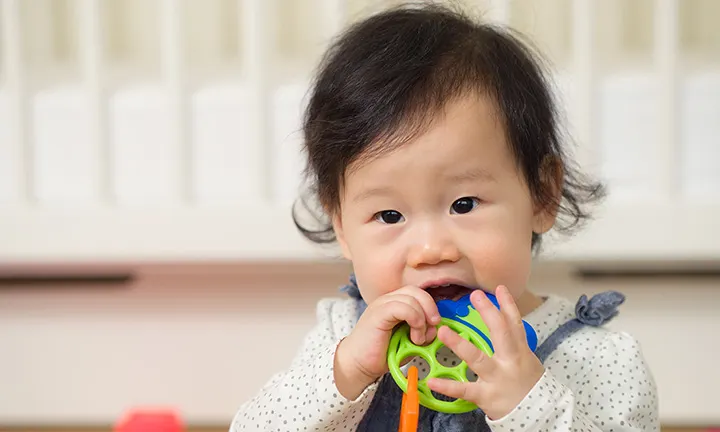
When carrying their precious infant home from the hospital, all first-time parents experience both excitement and anxiety. It is only natural that you have many unanswered questions, given that your child’s fate is entirely in your hands.
However, it need not be overbearing. You can do several things to prepare for your child’s birth, such as purchasing nursery furniture and stocking up on essentials such as diapers and bathing supplies.
It is also essential to pay attention to your baby’s changing requirements, such as when the infant begins teething.
This comprehensive guide explains how to choose baby teethers and when they can be given to a newborn.
When should I give my infant a teething toy?
Teething is one of the most crucial developmental milestones for infants. And if they could comprehend us, telling them this might be enough to alleviate some of the suffering they are experiencing at this juncture.
There are, thankfully, a number of indicators that will let you know when your child’s milk teeth are beginning to erupt:
- Drooling more than usual
- An increase in the number of objects being chewed
- Shedding tears more frequently
- Reddened cheeks
- Having difficulty resting
- A slight rise in body temperature
- More irritable than usual
If you observe any of the above symptoms, there is a good possibility that your child would benefit from a teether. However, if you wish to prepare them earlier, you may want to contemplate a pacifier before the onset of teething. It aids in acclimating them to the sensation beforehand.
What are the most effective teethers and pacifiers?
Similar to other infant products, there are numerous options when it comes to teethers. How do you choose the finest pacifiers and teethers for your baby? There are a few factors to consider when browsing for teethers for your infant.
Materials
You want to choose a nice and secure material, so one devoid of toxic substances is your best option. Avoid teethers containing BPAs, phthalates, and any abrasive chemicals, and stay away from PVC as well. Look for items made of BPA-free rubber, silicone, or plastic that are hypoallergenic.
Texture
Various textures, such as wavy and bumpy patterns, will be very engaging for the infant. Even though these textures are somewhat stimulating for infants, they can be problematic if they irritate the gums while being chewed. To avoid discomfort, you must ensure that the overall surface is lovely and smooth.
Longevity
The effectiveness of a teether will be evaluated daily. Toys will be chewed, tugged, dropped, sucked, and hurled, so choosing one that can withstand these abuses without becoming splintery or a choking hazard is essential. Consider the manufacturing quality, and for peace of mind, you may want to choose a well-known brand.
Design
These days, teethers are available in various sizes, shapes, and styles. While the overall design is a matter of personal preference, we recommend you search for a pram with a handle your child can grasp independently. A clip or similar device that prevents it from falling to the floor (as much as feasible, at least!) is also an enormous plus.



